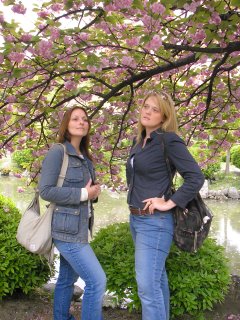
The history of Kanazawa gold leaf can be traced back to the latter half of the Sengoku period (1428-1573), when Maeda Toshiie, the feudal lord of the Kaga clan governing the southern part of the area now known as Ishikawa Prefecture, sent a document back to the country from a campaign in Korea, explaining how to produce gold leaf. The Shogunate subsequently set up a gilders' guild and controlled the production and sale of gold leaf throughout the country. After the Meiji Restoration in 1868, however, Kanazawa gold leaf workers took the opportunity on the abolition of governmental control to successfully develop both the techniques and extent of production. Being of such a high quality, Kanazawa maintains its position as the number one center for the production of gold leaf in the country.

The leaf is very thin and in the case of gold leaf is between 0.0001 mm and 0.0002 mm thick. For this reason, it is possible to apply the leaf to materials however complicated the pattern might be. What is more, none of the brilliance of the raw gold is lost at all, and the beauty and splendor of the finished products never cease to captivate the heart of the beholder.

It still has a wide range of craft applications in the fields of textiles, lacquer ware, ceramics and on various types of screens, often applied to paper. It is also used on signs and individual carved characters as well as on the mizuhiki decorations for gifts and on the best art mountings. Large amounts of gold leaf in particular are used on household Buddhist altars and on shrine and temple buildings, too.

The industry is sustained by 200 firms employing 1,000 staff, among whom they are 26 Master Craftsmen.

Yayy - Year of the Dog! :)

This is a pic of the musical jewelry box that I bought there. I love it!!!

Some of the free tea they offer their guests with gold flakes inside. Quite yummy! We even ate more gold on the tour. Fun stuff!


Some of the golden art displayed around the shop!




Even the bathrooms were covered in gold leaf. :)





 Check out the NICE bathrooms at this Karaoke joint!
Check out the NICE bathrooms at this Karaoke joint!


 BARBIE GIRL! "You can brush my hair and touch my anywhere!" hehehe
BARBIE GIRL! "You can brush my hair and touch my anywhere!" hehehe

 Some of the weird Japanese men that came into out singing box. What does the guy in the suit have a leather purse?
Some of the weird Japanese men that came into out singing box. What does the guy in the suit have a leather purse?














































 The origin of dosojin stone markers is shrouded in the mists of uncertainty, and no exact date can be given. But precedents are ample in the Buddhist world. Here is the tale of one of Japan's most popular and beloved deities, Jizo Bosatsu. In the early centuries following the introduction of Buddhism to India (introduced around 500BC), Jizo became known as the guardian of travelers and pilgrims, and statues of his image could be found along pilgrimage routes and mountain passes in India and Southeast Asia. That tradition is still evident in modern Japan, where one often finds groupings of six Jizo statues standing guard on the high roads or at busy intersections.
The origin of dosojin stone markers is shrouded in the mists of uncertainty, and no exact date can be given. But precedents are ample in the Buddhist world. Here is the tale of one of Japan's most popular and beloved deities, Jizo Bosatsu. In the early centuries following the introduction of Buddhism to India (introduced around 500BC), Jizo became known as the guardian of travelers and pilgrims, and statues of his image could be found along pilgrimage routes and mountain passes in India and Southeast Asia. That tradition is still evident in modern Japan, where one often finds groupings of six Jizo statues standing guard on the high roads or at busy intersections.